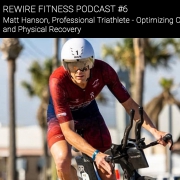10 Books on Mindfulness Training to up Your Game
1) Mindfulness for Beginners (John Kabat-Zinn)
I first discovered Mindfulness for Beginners as a runner in university. I was fascinated by the idea of training the mind to unlock my potential. Fortunately, Kabat-Zinn’s work taught me that everything we need is already inside. In Mindfulness for Beginners, Kabat-Zinn gives an in-depth explanation of what it means to practice mindful attention in both an informal and formal way. He also gives one of the best operational definitions of mindfulness to start the book. Kabat-Zinn describes mindfulness as “paying attention to the present moment on purpose in a non-judgmental way.” He later goes on to describe how to practice each component of his definition (paying attention to the present, living intentionally and non-judgmental attitudes) by using stories and gives practical steps to advance your mindfulness practice. What I like so much about Kabat-Zinn is that it takes away the supernatural aspects that people may associate with practicing meditation and focuses on the real and now. This can be summed well by this line from Mindfulness for Beginners:
“The fact of the matter is that meditation is not about navel-gazing or giving up functioning in the world. Nor is it about giving up engaging passionately in projects of real value and getting things done, nor will it make you stupid or rob you of ambition or motivation.” (p. 80)
2) Wherever You Go, There You Are (John Kabat-Zinn, MD)
Wherever you go, there you are is another great book written by Kabat-Zinn. In case you were unaware, Kabat-Zinn started the Mindfulness Based Stress Reduction medical model back in the 80s and 90s which has been effective in pain management for several chronic diseases. This book digs into his philosophy and years of practice by giving brief passages to reflect on while practicing meditation. One of my favorite lines from this book talks about how telling people about how you’re meditating kills your momentum and motivation to mentally train. In the words of Kabat-Zinn, “It’s best to meditate without advertising.”
3) Mindfulness on the Go: Simple meditation practices you can do anywhere (Jan Chozen Bays, MD)
After reading the intros to the first two books on this list, you may think, “How am I supposed to do this? I hate sitting as it is, now I have to pay attention to it?” Well, it’s a lot simpler than you may be imagining or worrying about. Bays wrote this book to give her audience simple, meaningful mindfulness exercises to start doing. These practices would be what Kabat-Zinn considers informal exercises, but the reality is that you must stay present either way. My favorite exercise from the book is seeing how long you can focus on the sensation of your feet on the ground during the day. I do this exercise when I’m on a long run or track workout and things are starting to hurt.Rewire also has some great meditations to help center yourself throughout your day that are quick and informal. One of my favorites is Pranayama or alternate nostril breathing to help center me during the day. Mindfulness On the Go is packed with different exercises to informally insert present-moment awareness throughout your day.
4) Slalom: 6 River Classes about How to Confront Obstacles, Advance Amid Uncertainty, & Bring Focus to What Matters Most (Joe Jacobi, OLY)
If you want to read something simple yet profound about learning how to be present during difficult times, I suggest reading Slalom. Jacobi is a distinguished athlete (10x national champion and Olympic Gold Medalist) who understands how to get the best of yourself and others during trying times. I picked up this book earlier this summer as I was beginning to practice open water swimming in Lake Michigan. I was always uncertain about swimming in open water and have had periods of intense anxiety towards it. However, Jacobi’s advice of building what he called an “unlikely collaboration” certainly helped me redefine my relationship with uncertainty and get out of my comfort zone further. Another way I have been deliberately adding obstacles is by adding post-workout Rewire sessions after harder days on the track or in the gym.
5) The Mind Illuminated: A Complete Meditation Guide Integrating Buddhist Wisdom and Brain Science for Greater Mindfulness (John Yates, Matthew Immergut and Jeremy Graves)
If you have read Mindfulness for Beginners and have made it this far, you’ll be glad to note this book gives an in-depth approach to the use of mindfulness training in your everyday life. The Mind Illuminated is essentially a practical manual for meditation practitioners to guide others through a transcendent experience. What I liked about this book is that Yates and co. talk about how several cultures outside of eastern Asia have their own history of practices that develop a present moment awareness. The authors of this book also go into detail about how to overcome several barriers that may occur as someone goes through a mindfulness practice. I like to read this book more as a workout plan for your mind. You don’t do everything in a single activity and expect to be fully present 100% of the time, right? Neither should you expect that from this book. Rather, this book can take weeks if you’re practicing and trying to troubleshoot different aspects of your mental practice.
6) Mindsight (Dan Siegel, MD)
Personally, this was one of my favorite books to read throughout grad school, and one that I’m hoping to reread within the next year. In Mindsight, Dr. Siegel goes on to explain what mindsight is- the trainable skill to separate ourselves from our emotional responses. The idea of perceiving the mind as separate from ourselves comes from multiple cultural traditions including the stoics and Buddhists. How we perceive our emotions can change how we react to them. Dr. Siegel goes on to also explain the neurobiological mechanisms that occur when we can “name and tame” our emotions. When we develop this form of attention, we can clearly understand our own responses, habits and take control over our emotional intelligence.
7) The Mindful Athlete: Secrets to Pure Performance (George Mumford)
Mumford has been a force in the mindfulness training community for decades. If you open his book, you’ll read reviews from athletes at the high school, college and professional level who only talk about the benefits of meditation. In the Mindful Athlete, Mumford digs into the power to stay present and locked in during important performances. It is a power (or rather superpowers) that every athlete has inside of them and only learns to unleash through mindfulness training. He teaches us through his words that mindfulness training isn’t a destination, but a journey. On that journey, you might find greatness along the way. To summarize this, the first few lines of Mumford’s journey can pull anyone into this book for hours:
“Pain brought me to mindfulness, not any desire to reach nirvana or pop out of any chrysalis. It was unlearning certain habits and thought patterns hard-wired in my brain and walking through my pain, rather than avoiding it, that ultimately put me on a joyful journey of self-discovery.”
8) Good Morning, I Love You (Shauna Shapiro, PhD)
This is a book that I’ve gifted to nearly every person I know who has experienced chronic pain. In Good Morning, I Love You, Shapiro retells her story of being a competitive volleyball player whose career was upended by a severe back injury. After a trip with her best friends to study meditation in southeast Asia, Shapiro noticed differences in herself. This led her on a journey to become a clinical health psychologist who specializes in mindfulness training. Shapiro gives meditations to practice for beginners, as well prompts that she has used in her own practice to help her develop her own mental training.
9) 4,000 Weeks: Time Management for Mortals (Oliver Burkeman)
These last two books are not focused on meditation training specifically. Rather, they will change your view of reality and teach you what it really means to be intentional. My grandfather always told me that you don’t find time for the things you care about, you make time. In Burkeman’s 4,000 Weeks, he eloquently digs into the fact that are culture of productivity is built upon smoke and mirrors. The fact is that we only have so much time to do something meaningful on this planet and time itself is a reality, not a resource. The most powerful lesson I learned from this was much like a budget, to make you pay yourself first with your time during the day. I usually start with a readiness assessment from Rewire when I finally look at my phone and practice meditation for the first 15-20 minutes of my day. I’ll let you dig into the rest of the details and have your own epiphany, but if you want something to reinforce your intentional and deliberate practice during the work week, I highly suggest you read this book. If you want more strategies on how to pay yourself first in the morning with your time, I also suggest this post on how to master your morning routine.
10) This Is Water: Some thoughts, delivered on a significant occasion about living a compassionate life (David Foster Wallace)
Lastly, if you need something brief to help you break out of autopilot, This is Water is just for you. This essay takes about 30-35 minutes to read, but hours of deliberate practice to fully comprehend if you’re like me. Wallace wrote this in a contrarian style when he was asked to give a commencement speech at Kenyon College. The premise of this book is that the young graduates who he was addressing had no idea of what kind of world they were just about to enter after getting into college. So many people live their lives unconsciously in doing mode, that they never contemplate the reality of the world they live in. This is the water that Wallace addresses in his first few lines of the speech. After reading this essay, I hope you begin to understand the difference between living your regular 9-5 lifestyle, that comfortable routine you can shut your mind off in. Instead, I hope you learn what it means to live a meaningful and intentional life by delving into at least one of the few books that I’ve laid out for you here.
These books are just a guide to get started on developing your own mindfulness practice. I’ll be honest in saying that I’m still working through some of these books as I explore my own meditation practice. I hope these books give you a guide to start thinking about both the philosophy and practical application mindfulness training can play in your athletic careers.
Through mindfulness training, you can develop a powerful mind-body connection which can increase your performances. Jumpstart your mindfulness practice by using the Mindset Recovery tools provided within the Rewire app and help you track of your mental training.
Click Here Download the Rewire App and Join Our Community for Free.















